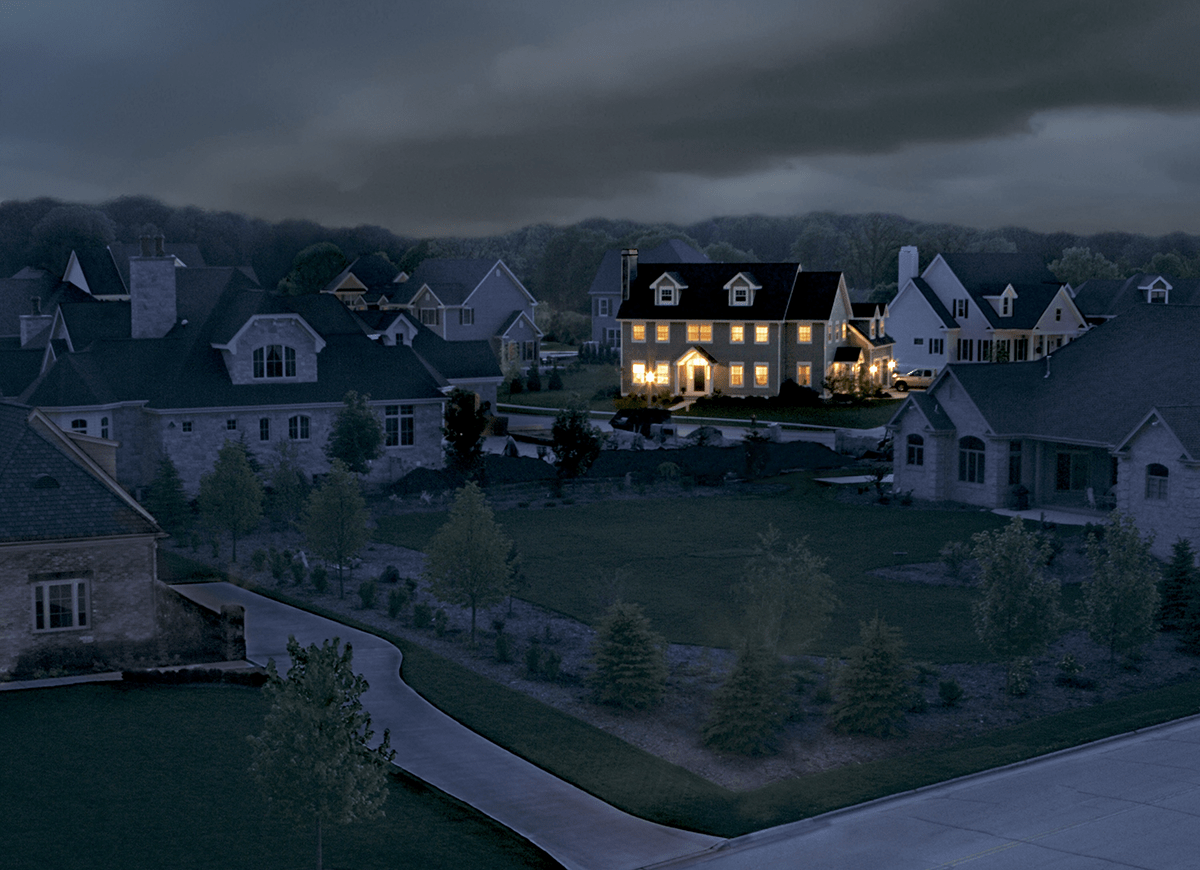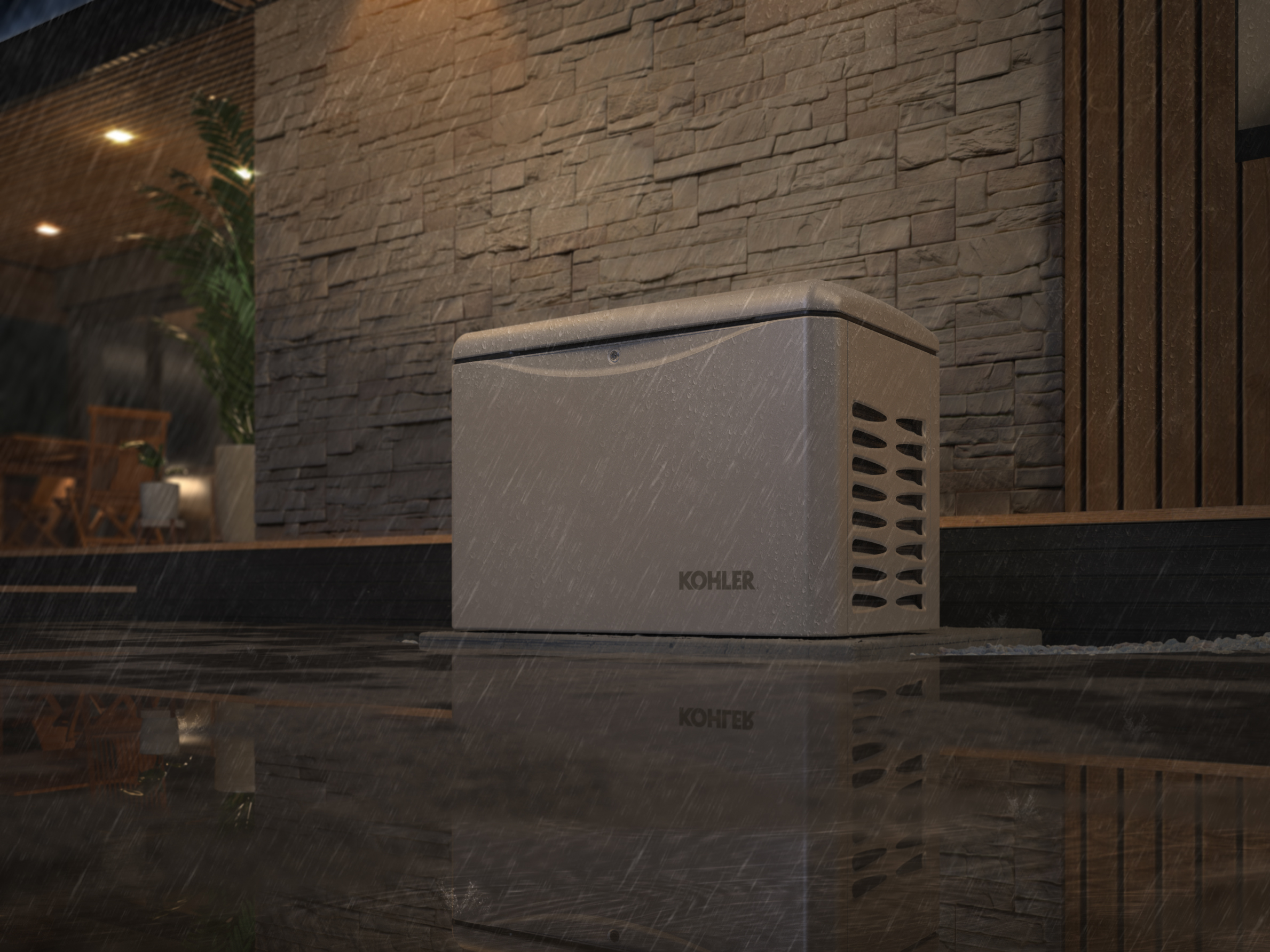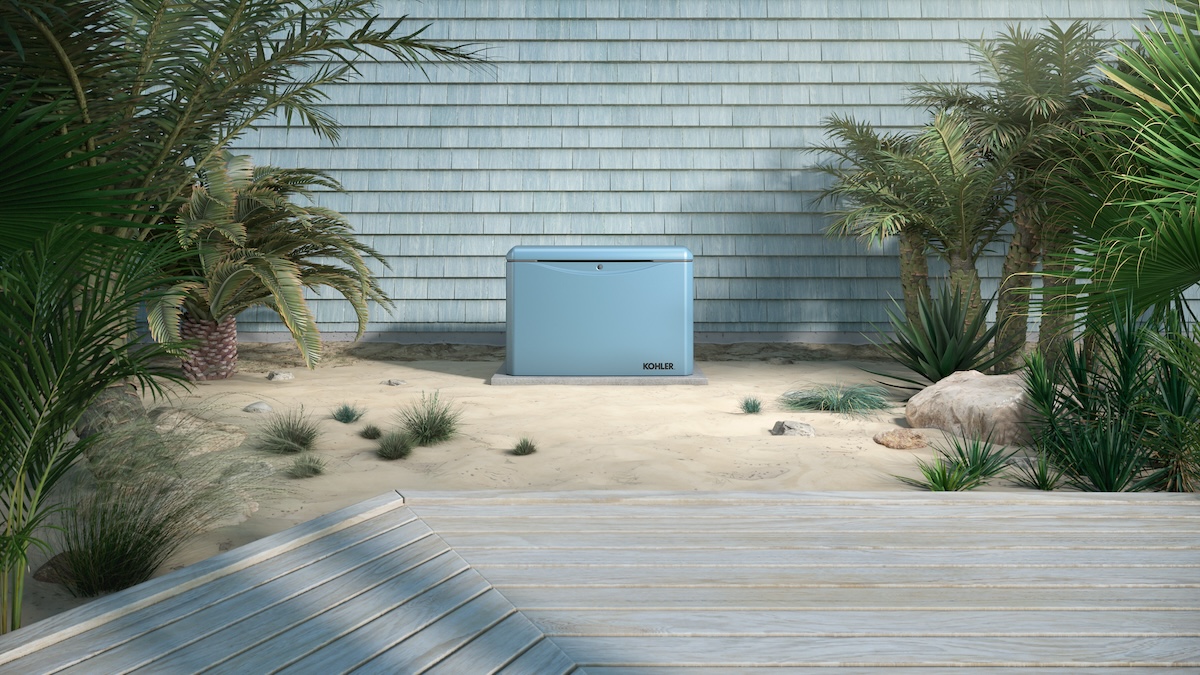

Partner Story
Keep your house running during a power outage with a Kohler standby generator. Powerful, reliable, and built in the U.S.A.


Partner Story
Keep your house running during a power outage with a Kohler standby generator. Powerful, reliable, and built in the U.S.A.
We may earn revenue from the products available on this page and participate in affiliate programs. Learn More ›
Extreme weather and increased demands on the power grid can lead to blackouts that are inconvenient at best and dangerous at worst. Having a powerful and reliable whole-house generator on standby alleviates the risks associated with power outages.
A startling 94 percent of American households are without whole-house generator benefits, according to Kohler Energy, a global leader in backup power solutions for more than 100 years. This means a significant portion of American families are defenseless against potentially life-threatening power outages. Food storage, power-dependent medical equipment, and basement-saving sump pumps are among the electricity-run devices that you don’t want to be without in times of emergency—not to mention heat or air conditioning.
A standby generator is a system that automatically provides power to a home when the power grid goes offline. Today’s standby generators, such as the KOHLER 26 kW Home Generator, activate automatically when they detect a power loss to immediately supply crucial electricity to a home.
The best whole-house generator is one that is permanently installed in a fixed position outside the home, similar to an air conditioning unit. Standby generators connect to a home’s integrated supply of natural gas or propane to produce enough electrical power to supply an entire home. These differ from portable generators, which get their fuel—typically gasoline or propane—from a nonintegrated source, requiring frequent and manual refueling.
Whole-home generators are typically enclosed in a weatherproof housing to protect them during bad weather.

Kohler’s most popular generator, the 26RCA, can power all circuits in larger homes. It handles demanding loads such as heat pumps and air conditioners without sacrificing power to other circuits. Its maximum sound output is 67 decibels, which is about the sound of normal conversation. Plus, homeowners can customize the unit with one of 11 colors and three camouflage patterns.
While portable generators can be useful in a pinch, they won’t be able to handle an entire home’s needs for an extended period of time, and the homeowner must start one manually in the event of a power loss. When a whole-house generator kicks in automatically, on the other hand, power continues to flow seamlessly to everything in your home for as long as you need it, offering numerous benefits for the health and safety of your family.
For people receiving medical care at home, for example, power to CPAP or nebulizer equipment is essential. Those who rely on sump pumps to keep their homes safe from flooding need a reliable power supply from a home generator, especially during inclement weather when flooding risk increases.
Everyday appliances, too, are important. If you stock up the fridge and freezer in anticipation of a big storm, you definitely don’t want that food to spoil due to lack of power. Keeping the AC or heat running during grid failures is essential too, as is the uninterrupted operation of your home’s security system.
Look at a number of factors when selecting a generator for your home. Among the most important is the amount of power your home needs to run smoothly during a blackout period. Also, think about the frequency and duration of power outages your neighborhood typically endures. You’ll want to find a generator that can meet the needs of your particular situation. The KOHLER 26 kW Home Generator, for example, can provide ongoing power to a home over several days or weeks.
Think about durability when choosing a generator—you’ll want one that will be reliable in all types of weather, year after year. Also, consider checking with your homeowners association, which might have size or noise restrictions you’ll want to take into account.

The 48RCA is another terrific choice for home standby generators. At 48 kW, this unit has plenty of power for everything in a home with 200 amp service. Its commercial-grade engine can restore electricity to critical systems or appliances within 10 seconds when tapped into a home’s natural gas or propane fuel supply. The KOHLER 48 is also exceptionally quiet.
Putting in a standby generator is definitely not in the DIY realm. This complex undertaking should be handled by licensed professionals—both an electrician and a plumber are required—who have considerable experience installing standby generators.
Additionally, these installs typically require permits of various types, and sorting out codes and regulations in your particular jurisdiction can be an exercise in frustration. It’s often best to work with someone, like your local Kohler dealer, who can help cut through red tape and make the process smooth.
Professionally installed, high-quality standby generators such as the KOHLER 26 kW Home Generator connect to a home with an automatic transfer switch as part of the setup. The transfer switch is connected to both the generator and to the main electrical panel of the home.
The automatic transfer switch monitors the electricity received from the utility service. When it detects an outage, it automatically switches the power source from the utility to the standby generator. This process takes about 10 seconds, and the homeowner doesn’t have to do a thing. The generator will continue to power the home until the transfer switch detects a signal from the utility, at which time it switches the power source back to the grid.

The KOHLER 10RESV can easily start and run a 5-ton air conditioner. It will power most appliances in a smaller home or a few critical items in a larger home, all while offering a compact footprint for those with space constraints. Like all Kohler generators, the 12RESV also provides advanced voltage and frequency regulation to protect sensitive electronic devices during power outages.
The best time to buy a standby generator depends on where you live. You absolutely want to have one in place before storm season hits, and that varies, of course, from region to region. If you live in a hurricane-prone area, for example, have a generator installed well before early June, when hurricane activity begins. If cold, snowy winters are common in your climate, consider purchasing a generator in late summer or early fall.
Sometimes it’s not a storm but instead extended heat waves that can bring a power grid down. If you live in an area plagued by summer blackouts or brownouts, get your generator installed before summer’s punishing temperatures kick in.
All that aside, the short answer, ultimately, is that now is the best time to install a whole-house generator, while protecting your family is top of mind.